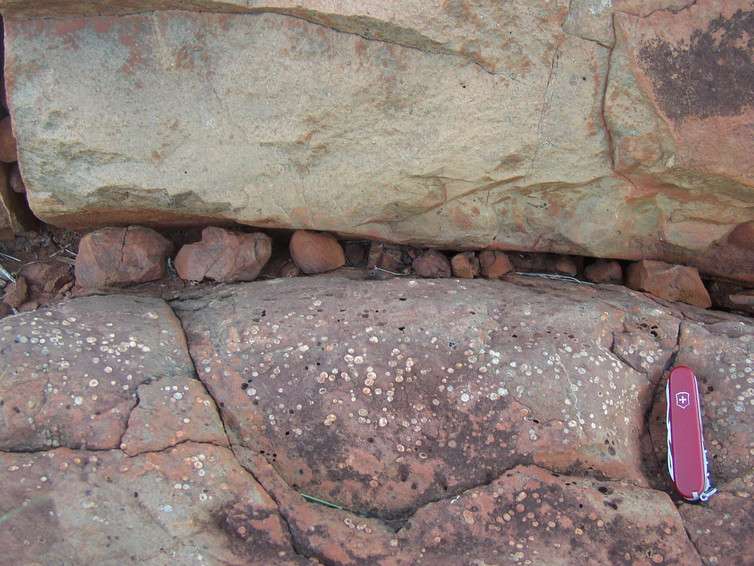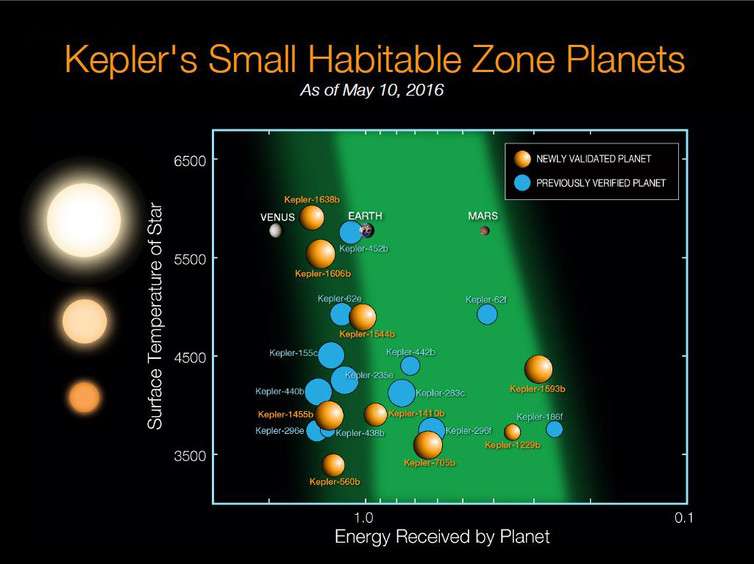Earth's magnetic heartbeat, a thinner past and new alien worlds

Space research never stops and it seems neither do the surprises. On ABC Breakfast News I covered some huge results from the last few weeks.
The magnetic poles are moving, but Santa isn't going anywhere, Astronomer @astroduff explains https://t.co/zrXwHLJDHM
— News Breakfast (@BreakfastNews) May 15, 2016
Be still my beating (magnetic) heart
Earth's magnetic field isn't just useful for helping us to not get lost when hiking. It's a key part of what protect us (and our vulnerable electronics) from radiation from space and solar outbursts. So it was far from simple curiosity that lead the European Space Agency to launch the Swarm trio of satellites to monitor our planet's magnetic field.
After two years of data collection Swarm has uncovered significant and rapid changes in the direction and strength of the magnetic field. Over the course of weeks you can see changes in the field, with a pulsation in our magnetic field that is directly tied to the heart of the planet.
That's because the magnetic field is generated by the motion of the molten iron core of Earth, and this "heartbeat" seen by Swarm is directly related to changes in that flow 3,000km below your feet.
It may come as a shock to many of us, but the Earth's magnetic poles are on the move and have been for the century or so of detailed measurements. In the case of the North Magnetic Pole, it is moving towards Asia, and the South Magnetic Pole is leaving Antarctica and heading towards Australia. This is all part of a large scale swap of North and South called a field reversal, which happens every few hundred thousand years.
The Swarm constellation confirms that the motion of the poles is speeding up, meaning that compasses in a few centuries times might have North rewritten as South.
Also don't worry about your great great great grand kids on that hike, as even this potentially weakened magnetic field (as well as Earth's atmosphere) will continue to protect them from radiation from space.
Earth's thinner past
A key model of Earth's history is that billions of years ago we must have had a thicker atmosphere than now. This thick atmosphere was assumed because the younger Sun was dimmer than it is now, meaning Earth would have frozen without the added greenhouse effect of extra air. Not the conditions one needs for life to arise, nor indeed were hints of any glaciers in ancient rocks of the time.
The latest research in Nature of Australian rocks from Beasley's River have suggested that far from being thicker the young Earth in fact was paradoxically thinner than it is now.
Picture the scene, 2.7 billion years ago, of a younger Earth. Lava pours across the land and reaches a sea. The rapid cooling of the hot lava by the water causes a glass-like surface to form.
While the release of the pressure from the depths of the mantle to the atmosphere allows dissolved gasses to bubble out like opening a bottle of fizzy soft drink. Just like when you've only partly opened the bottle and the pressure is still above the atmosphere around the bubbles that form are smaller than if you just open it fully.
Those surprisingly large bubbles (which are seen in white, having since filled in with calcite) indicate that the background air pressure was at most half of the current air pressure we experience today.
This is similar to what you would experience on a mountain 5km high, yet thanks to the glass-like "lava toes" this lava undoubtedly flowed at sea-level. Thanks to other Australian rocks of a similar age bearing fossilised single cell life (known as stromatolites) we now life had arisen and was flourishing in this thinner Earth.
As the Sun was definitely dimmer and hence cooler how did Earth not freeze without a thicker blanketing layer of atmosphere? One suggestion is that water can more easily boil in low pressure (on top of that mountain your kettle wouldn't boil at 100 degrees centigrade but instead closer to 60).
Increased levels of water vapour or other greenhouse gasses, such as methane, may hold the answer. However, for now it's clear that life can form and thrive across a wider range of pressures than we may have hoped, and certainly increase the narrows bounds we consider for potentially life-sustaining alien worlds.
Count again
A more generous consideration of what planets may harbour life is particularly timely as NASA's Kepler satellite revealed 1,284 planets, doubling the number known.

Amongst this treasure trove of confirmed alien worlds are 550 worlds small enough to potentially be rocky life Earth, and nine are in the habitable zone of their star. This is a band around a star that is far enough away that the water isn't boiled off, but not so far that it freezes into ice, and instead might exist as a liquid, hence the alternative name of the "Goldilocks Zone".
The next step in determining a world's suitability for life is to examine the atmosphere. This is a challenging observation but next generation telescopes such as NASA's James Webb Space Telescope will be able to discern the content and temperature of the air of these worlds.
Thanks to learning about our own planet's history we might not be quite so picky about these other alien worlds when considering their potential for harbouring life.
Source: The Conversation
This article was originally published on The Conversation. Read the original article.
![]()





















